THE TOWN HALL BISHOP’S CASTLE SHROPSHIRE
Bishop’s Castle Shropshire lies about twenty miles south west of the county town of Shrewsbury. It has been a central market place in the Marches for hundreds of years. The castle, from which the town derives its name, was built between 1085-1100 by the Bishops of Hereford, as Marcher Lords, for defence against the Welsh. A new town was created here on the site of an Anglo-Saxon settlement in 1127. The settlement has expanded little since medieval times and even in the twenty-first century maintains its simple grid of streets and burgage plots which lead down the hill and away from the remains of the castle to form the town. In 1203 King John granted Bishop’s Castle its first charter and later in1285 there were forty-six Burgesses.
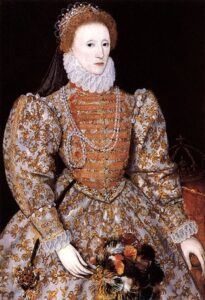
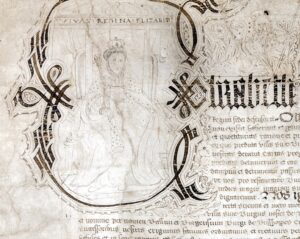 Elizabeth I and the Elizabethan Charter of 1573
Elizabeth I and the Elizabethan Charter of 1573
By the mid-sixteenth century Bishop’s Castle was returned to the Crown after which Queen Elizabeth I authorised a new charter, dated 1573, which specified self-government of Bishop’s Castle through a Bailiff and fifteen Capital Burgesses. The borough had its own prison from this time, but most importantly this Elizabethan charter marked a new phase in the history of Bishop’s Castle. However the castle, from which the town takes its name, has for the most part disappeared and what remains is cared for by the Old Castle Land Trust. In its place the eighteenth century Town Hall stands ‘castle-like’ in a strategically dominant position at the top of the town surrounded by smaller buildings of stone, timber and brick, which together create a characterful townscape. Whilst it is known that other civic buildings have existed in the adjacent area – the Jacobean Market Hall built in 1618 and the Powis Market Hall built in 1781 – this particular building is the only surviving civic structure in the town today.
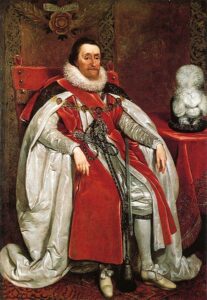
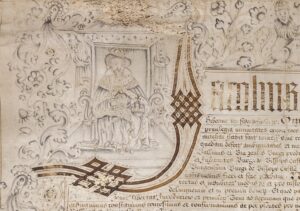 James I and his Charter
James I and his Charter
The terms Town Hall, Guildhall and Market Hall were frequently interchangeable or else served a combined function. For Bishop’s Castle the terms Guildhall, Town Hall and Town House were used in the early records. In practice a market hall and town hall were frequently combined in one building to provide a covered market and council chamber. From the available records it seems that in the sixteenth and seventeenth centuries a civic building probably existed on the same prominent site. But brief documented glimpses in the seventeenth century inform us that by this time the building had a clock, a bell, at least two large windows, a staircase and a gaol. Frequent and sometimes major repairs were carried out during the remainder of the century. However, by August 1745 the burgesses decided to replace ‘the ancient building’ but were careful to order the re-use of stone and timber and make the Bayliff, Recorder and Justice responsible for the work. In addition a signed estimate for building the new Town Hall, from architect William Baker at a cost of £410 and dated November 1745, has survived together with some unsigned architectural drawings, but there is no mention of the new building in the minute books.
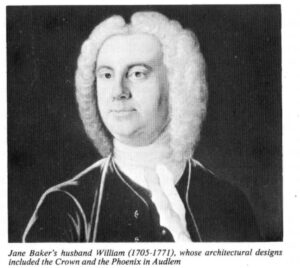 William Baker
William Baker
William Baker was known as ‘The Midlands Gentleman Architect’ with a large practice in the North West Midlands, Shropshire and parts of Wales. There has been speculation concerning the date when the new town hall was completed and it would seem sensible for the rebuilding to have been executed soon after the minuted order. Unfortunately there is no evidence to support a specific date leaving only the suggestion that the work was carried out during the 1750s. Whatever the date Bishop’s Castle town hall is an eighteenth century rural treasure from which the politics of parliamentary elections was played out when Bishop’s Castle evolved as one of the politically ‘rotten boroughs’ where bribery, corruption and scandal caused wealthy men to vie with each other and lose fortunes whilst the local economy thrived.
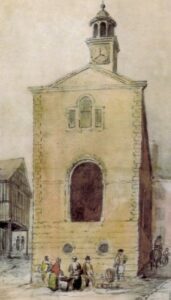 Painting of the Town Hall in 1849
Painting of the Town Hall in 1849
Find out more about Bishop’s Castle and its history by visiting the Town Hall.
